Contents
Before you learn how to increase fiber intake, you must know more about this all-important carbohydrate. Fiber is a component of foods that are plant-based that have the following characteristics:
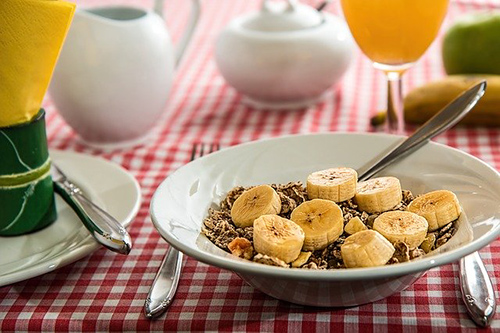
- It is necessary for proper intestinal function.
- It is undigestable, and it does not pass to the bloodstream. It remains in the intestine and forms part of the feces.
- It retains water, which increases fecal volume.
- Although it is not acted on by digestive enzymes, as are other carbohydrates, proteins, and fats, it is partially fermented by bacterial flora in the colon. This process results in various intestinal gasses.
- Its consumption (at least 25 g daily for adults) contributes to the prevention of various diseases such as:
- Constipation
- Diverticulosis
- Colon cancer
- Excess cholesterol and diabetes
Tips on How To Increase Fiber Intake
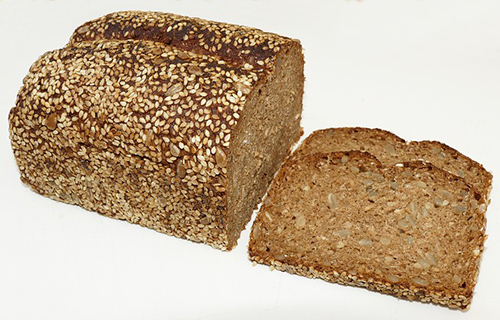
Increase the consumption of legumes and vegetables. Vegetables such as onions, leeks, cabbage, and legumes contain oligosaccharides, a fiber different from the cellulose that forms grain bran. Vegetables and fruits are a great answer to the question of how to increase fiber intake.
Bacteria break down these oligosaccharides in the intestine, creating more or less bothersome but innocuous intestinal gasses. Despite the small inconvenience created by the gas, oligosaccharides provide various health benefits:
- They increase the population of beneficial bifidobacteria in the intestinal flora.
- They prevent constipation by increasing the intensity of the intestine’s peristaltic action.
- They protect against colon cancer.
- They reduce cholesterol levels.
Eat whole-grain bread instead of white bread. Whole-grain bread contains approximately three times the fiber of white bread.
Eat fruit with all of its pulp instead of drinking fruit juice. Fruit juice contains virtually no fiber since the fiber is in the pulp.
Consume bran. The idea is to consume the bran naturally, forming part of grains or whole-grain bread. Each gram of bran increases the weight of the feces by 2-3 grams since it retains 2-3 times its weight in water.
High-Fiber Breakfast With Plums and Prunes
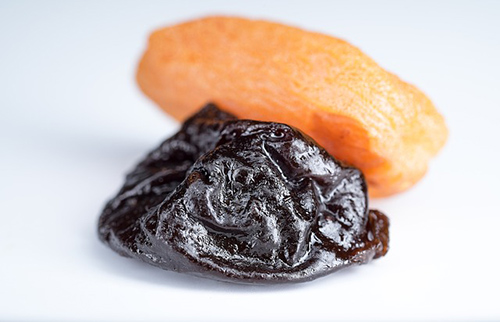
Fresh plums contain about 1.5% fiber, while prunes can reach 7%. Pectin is a complex carbohydrate that absorbs water in the intestine, increasing the volume of the feces and aiding evacuation. It also absorbs cholesterol and biliary salts that get eliminated with the feces. Plums and prunes are excellent high-fiber foods for kids, the elderly, and anyone with a frail digestive system.
Prunes are remarkable for their vegetable fiber, iron, and copper content. One hundred grams of prunes (about 12 pieces) provide:
- Almost one-third of the daily need for fiber
- One-fourth of the daily need for iron
- Almost one-third of the daily need for copper, a trace element that helps maintain arterial walls and bones, contributing to the prevention of arteriosclerosis and osteoporosis
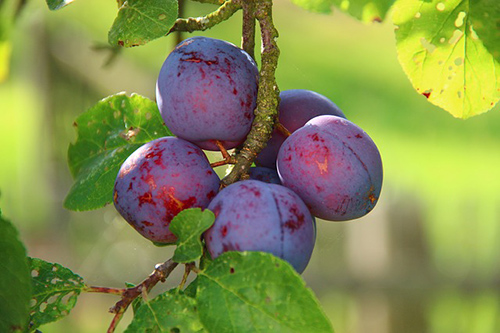
You can increase the laxative effect of prunes by soaking them overnight and eating them the next morning for breakfast. Drink the water they were soaking in for maximum benefit.
An ideal breakfast to fight constipation and protect the intestine should contain prunes, yogurt, honey, and a few slices of whole-grain or rye bread. Plums and prunes are great ways to increase fiber intake.
Foods To Increase Fiber Intake
The following foods are all rich in fiber and other essential nutrients that you can consume daily. This article is perfect for those seeking a printable list of high-fiber foods. You can print this list of foods for reference or share it with friends.
AVOCADO: The avocado is the richest fiber of any fresh fruit (5 percent or more). Today, the avocado is among the most valued fruits for its nutritional value and dietary and therapeutic properties.

BARLEY: Barley contains 17.3 g of cellulose fiber per 100 g; this is about 5 g more than wheat. On the other hand, pearl barley and the flour made from it contain much fewer nutrients because they are refined, as is true of refined white wheat flour. Barley loses 74 percent of its proteins, 88 percent of its minerals and vitamins, and 97 percent of its fiber during polishing. Malted grain or flour contains more nutrients than pearl barley since it is unrefined. It is rich in enzymes. Also, it is tastier than barley because of the toasting process that it goes through.
CABBAGE: Cabbage is rich in cellulose fiber. Thus, they are laxative, which helps regulate passage through the intestine. Some individuals who have a propensity for the formation of intestinal gas may experience flatulence from eating cabbage.
CARAMBOLA: This fruit’s delicate pulp is rich in soluble vegetable fiber (2.7 percent), which explains its soothing laxative action.
CORN: Sweet corn belongs to any high-fiber foods chart because it is a good soluble and insoluble fiber source.
DATES: One hundred grams of dates provide almost one-third of the recommended fiber intake for males and females. These are predominantly soluble fibers in the form of pectin and gums, although they also contain insoluble or cellulose fiber. Both types of fiber have a favorable, complementary effect on the intestine.
Pears Are An Excellent Food Packed with Fiber
LENTILS: Lentils belong on the fiber food list because of their high fiber content. (30 percent): supplies almost 125 percent.
OKRA: Okra is rich in soluble mucilage fiber that exercises a protective and soothing function within the digestive tract.
PASSION FRUIT: The pulp of passion fruit is one of the wealthiest vegetable products in soluble fiber (pectin and mucilage), which, when compared to the insoluble fiber of grain bran, does not contain phytic acid and, as a result, does not interfere with iron absorption.

PEAR: Eating pear is an excellent way to increase fiber intake. It is an excellent source of vegetable fiber (2.4 percent), a total that is slightly less than the apple (2.7 percent). Compared to the apple, the pear contains more insoluble fiber rich in lignin (the material that makes wood and wheat bran hard).
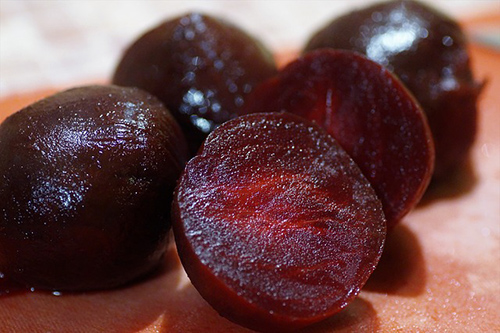
RED BEET: Red beets contain considerable amounts of vegetable fiber, which has the property of facilitating intestinal action and, above all, decreasing blood cholesterol levels by reducing the amount absorbed in the intestine. A University of Minnesota study showed that 30 mg of beet fiber daily for three weeks lowered total cholesterol by approximately 10 percent of its initial value.
RYE: Rye is similar to wheat in composition but has more proteins and fiber.
SOY: Soy contains 9.3 percent fiber, most of which is soluble. This amount is significant because whole-wheat flour contains 12.2 percent fiber and bran 42 percent. However, products derived from soy contain much less fiber (tofu, for example, has 1.2 percent). Soy fiber contributes to regularity in the digestive tract and reduces cholesterol levels.
Apples Are Excellent For Those Needing To Increase Fiber
WHEAT BRAN: The fiber in wheat bran consists of cellulose, hemicellulose, and lignin, which gives it a hard, woody consistency. Its fiber richness reaches 42.8 percent.
WHOLE GRAIN: Whole wheat contains 12.5 percent fiber, is most insoluble, and can be found primarily in the bran. This fiber gives wheat its significant laxative effect.
BANANAS: Bananas contain both types of vegetable fiber, soluble and insoluble, which are present in significant amounts. This fiber contributes to the banana’s hypolipidemic (lipid and cholesterol-lowering) and intestinal-soothing effects.

APPLE: Most of the apple’s 2.4 g/100 g of fiber is pectin. Only one-fifth of the fruit’s pectin is in the peel. Therefore, when removed, only a small portion is lost. Pectin retains water and various waste products in the intestine, acting as an intestinal “broom” that helps remove toxins in the feces. Apples are an excellent food for those wanting to know how to increase fiber intake.
ONIONS: Fiber contributes to the onion’s lipid-lowering (diminishes the absorption of cholesterol) and anti-diabetic action (delays the passage of sugar into the bloodstream).
LEEKS: Because of the laxative effect of their fiber, leeks can produce intestinal flatulence. Consuming leeks can help remedy constipation.
Learning how to increase fiber intake naturally is the best way to go. Eating fiber-rich foods is far superior to fiber supplements. Therefore, before you go the supplement route, learn about fiber supplement side effects. These fiber foods have no side effects; you can consume them daily. However, before consuming any foods on this how to increase fiber intake list to treat any ailment, please consult your physician.
DISCLAIMER: All content on this website is presented solely for educational and informational objectives. You should not rely on the information provided as a replacement for advice, diagnosis, or treatment from a qualified medical expert. If you are pregnant, nursing, or have any preexisting medical concerns, you should talk to your doctor before using any herbal or natural medicines.
REFERENCES
- George D. Pamplona-Roger, M.D. “Encyclopedia of Foods and Their Healing Power.” George D. Pamplona-Roger, M.D. Encyclopedia of Foods and Their Healing Power. Trans. Annette Melgosa. Vol. 2. Chai Wan: Editorial Safeliz, 2005. 109, 163, 194, 219, 240, 148, 144, 208, 129, 200, 134, 113, 234, 123, 117, 267, 308, 307, 319, 230, 71. Print. [how to increase fiber intake]
- Academy of Nutrition and Dietetics: “Fiber: Essential for a Healthy Diet”
- American Heart Association: “Fiber”
- Harvard Health Publishing: “Fiber: Essential for a Healthy Diet”
- Mayo Clinic: “Dietary Fiber: Essential for a Healthy Diet”
- National Institutes of Health: “Fiber: Eating for a Healthy Weight”
- The American Journal of Clinical Nutrition: “Dietary fiber and gut health”
- The Journal of Nutrition: “Fiber and prebiotics: Mechanisms and health benefits”
- The World Health Organization: “Diet, nutrition and the prevention of chronic diseases”
- “Fiber Fueled: The Plant-Based Guide to Gut Health and Longevity” by Will Bulsiewicz
- “The Fiber Manifesto: Eat for Optimal Health and Longevity” by Joel Fuhrman
